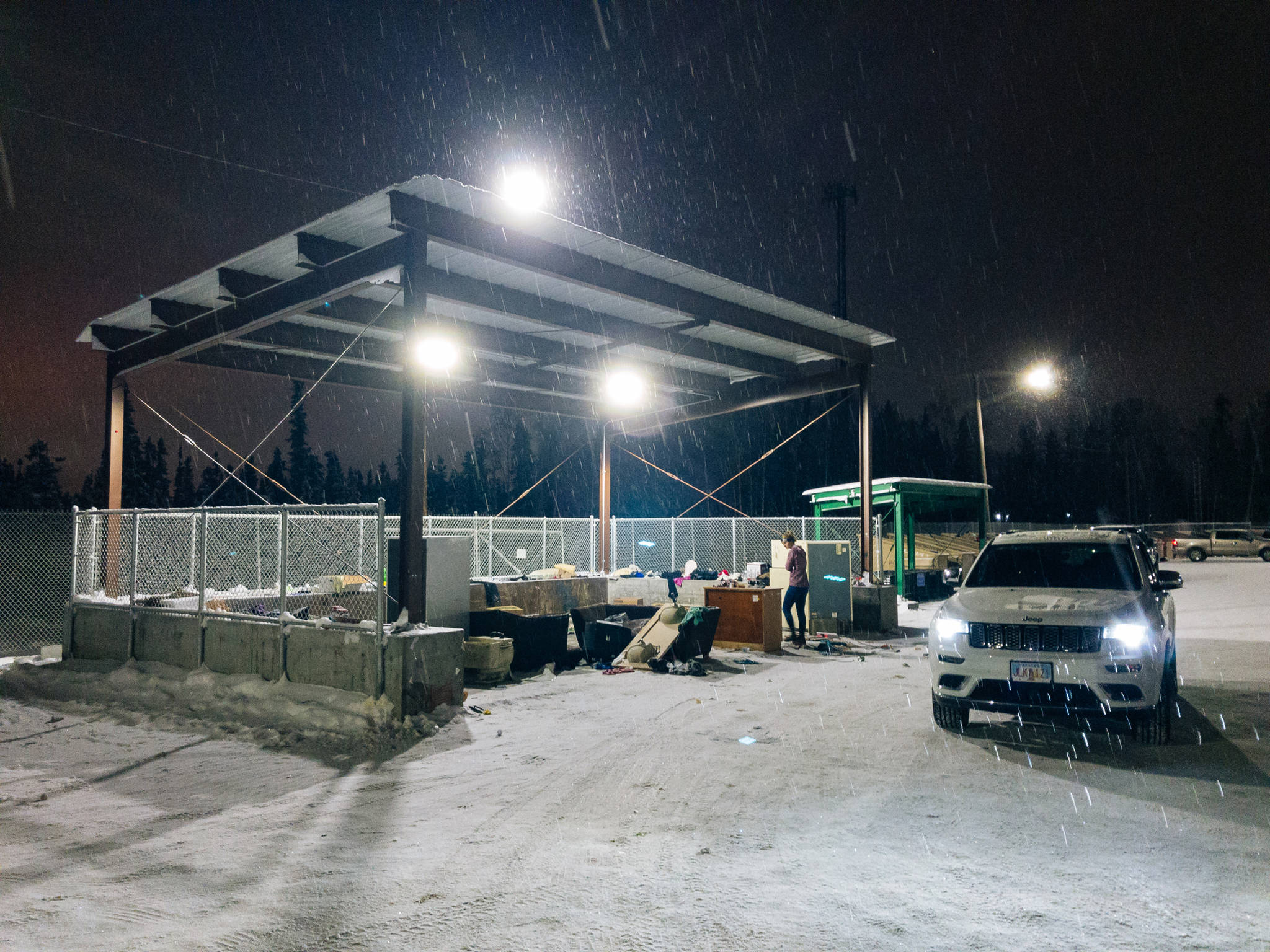Have you seen that University of Alaska Fairbanks outdoor digital sign displaying the temperature? In the winter it often shows crazy cold, far below zero, with people taking pictures in front of it, usually wearing just their underwear. I’ve been wanting to see that sign for a while.
Everything lined up just right for Thanksgiving break. Katie McCaffrey, Claire Helgeson and yours truly took the super early flight out of Juneau on Thanksgiving day. As soon as we landed in Fairbanks we headed for Chena Hot Springs. After about two hours floating around that giant natural smelly hot tub (sorry no photos, it was too dark and misty) we remembered we were supposed to eat on Thanksgiving, so we ran into the hot springs restaurant and the three of us shared two of their entrees because ain’t nobody got money for three. They were $19 each! We are vegetarian, so we didn’t feast on turkey or ham. But we did have some curry and pasta primavera. So much for celebrating the early settlers’ bounty.
My style of photography is really difficult in the frozen north. In Juneau, I typically capture candid moments handheld, with no fear of losing a finger. But in Fairbanks, with limited light and skin-cracking cold, it is way more difficult capturing anything spontaneous because you often need more exposure with each shot.
Everyone says “it’s a dry cold.” But you can’t understand until you feel it. When it’s cold in Juneau, it’s frickin cold. I’m assuming because it’s rainy and the wind howls. The humidity soaks into clothes and chills from the inside out. In Fairbanks, the interior dry cold isn’t actually that bad. During our trip, it was high teens in the day, just above zero at night. But no wind. I mean it still hurts your soul but it’s more surface-level burning. Just the same, everyone said it was much warmer than a normal November. It is super weird to experience Alaska without wind.
And how do the residents of the Golden Heart City stay warm? Wood fire and propane is what I’ve seen. Not really renewable but I guess it’s not that bad in comparison to the burning of coal Fairbanks uses to make electricity.
Fairbanks has these things called transfer sites and reuse platforms. I’ve heard Katie talk about them in the past but now I realize the positive impact these facilities could have on a community. A reuse platform is an area that allows locals to drop off unwanted items that are not trash. Although I am not familiar with how this informal-yet-organized swap location is managed, the idea of exchanging materials before they end up in the landfill sounds wildly simple and beneficial for everyone. Let’s do this, Juneau!
A lot of people live in dry cabins in the Fairbanks area. Dry cabins have no plumbing, and most have no sewer or interior toilet. It gets so cold in the winter months that pipes freeze, so people have decided to live without them. They haul their water to the cabin. Wash the dishes? All the greywater gets disposed of by hand. Need to poop? That’s what the outhouse is for.
Thank you to my new Fairbanks friends. To Joanne Groves for letting us stay in your beautiful, warm cabin, and to the Walling-Bell family for welcoming us into your cabin, feeding us and giving Claire and I our first snowmachine experience!
• California-born and Alaska-bred, Gabe Donohoe is an adventurer and photographer. He is a graduate of the University of Alaska Southeast Outdoors Studies Program. His photo archives can be seen on www.gabedonohoe.com. “Rainforest Photos” photo blog publishes every other Friday in the Empire’s Outdoors section.

